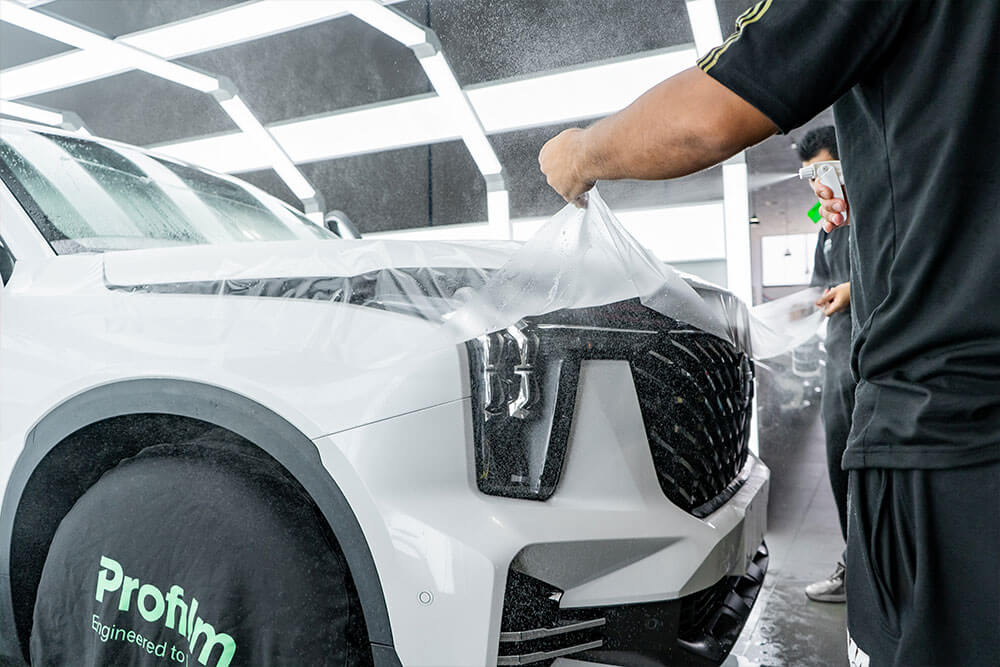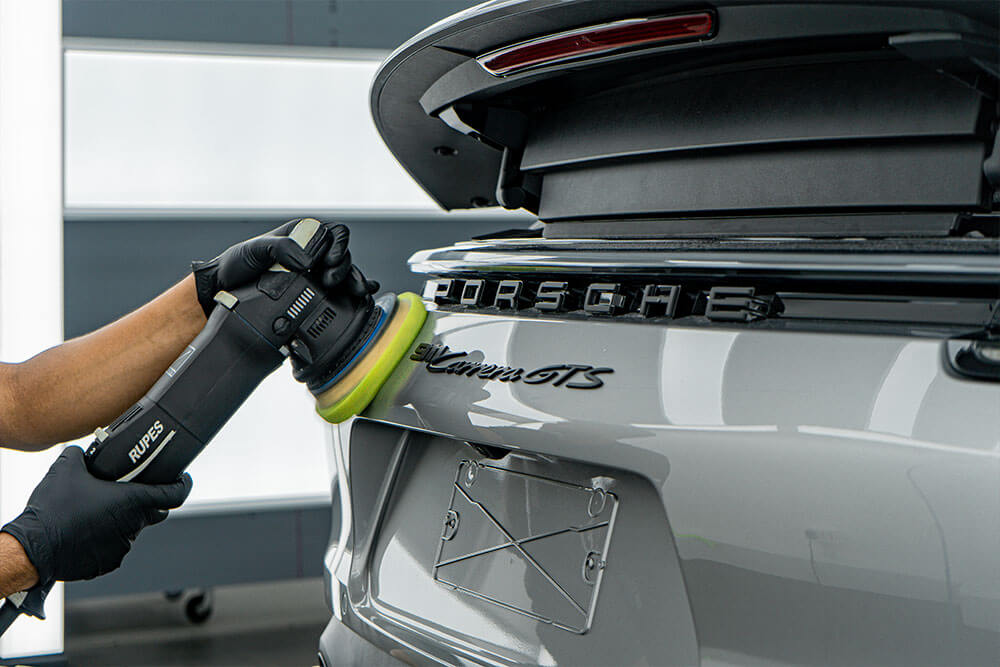
When it comes to Paint Protection Film (PPF) installation, one of the most challenging tasks is properly stretching the film over the car’s contours. While it may seem like a simple task just pull and press the film into place there’s more to it than meets the eye. Stretching the film without compromising its integrity or leaving behind wrinkles requires precision, expertise, and an understanding of the material’s behavior. Here’s why film stretching is harder than it looks and why professional installers make it look effortless.
The Material’s Elasticity
PPF is made of a flexible, yet durable, polyurethane material. This flexibility is what allows it to be stretched across the curves and edges of a vehicle’s surface. However, this elasticity can be both a blessing and a curse. While the film can stretch to fit around tight spots, it must be handled carefully to avoid overstretching or tearing. If the film is stretched too much, the adhesive can lose its bonding power, or the film may become too thin in certain areas, affecting its protective capabilities. Understanding the material’s limits is crucial for a successful installation.
Maintaining the Right Tension
Achieving the perfect amount of tension when stretching the film is an art in itself. If the film is pulled too tight, it may create unsightly tension lines or cause the film to contract after installation, leading to wrinkles. On the other hand, insufficient tension can result in bubbles or folds that compromise the film’s adhesion and appearance. Professional installers know how to find the balance, stretching the film just enough to conform to the vehicle’s shape without distorting the material or damaging its performance. The right amount of tension also ensures the film remains in place for years without peeling or lifting at the edges.
Adapting to Vehicle Curves
Vehicles come in all shapes and sizes, and each one presents its own set of challenges for PPF installation. Curved surfaces, sharp edges, and intricate details require precise film placement. Some areas may require the film to stretch more than others to wrap around tight curves or follow deep creases. Professionals use advanced techniques and tools, such as heat guns, to carefully stretch the film in specific directions. The heat softens the film, making it more pliable and easier to mold to the vehicle’s contours. However, too much heat can also cause the film to become overly soft, making it difficult to control. Proper technique and experience are key to managing the material under these conditions.
Avoiding Air Bubbles and Wrinkles
One of the biggest challenges when stretching PPF is preventing air bubbles and wrinkles from forming. Air bubbles occur when the adhesive fails to bond uniformly with the vehicle’s surface, trapping pockets of air beneath the film. Wrinkles, on the other hand, can happen if the film is stretched unevenly or if it’s pulled too aggressively in one direction. Professional installers use specialized tools to smooth out the film and remove any trapped air as they stretch it over the car. The process requires patience and precision to avoid any imperfections, which would detract from the aesthetic quality of the installation.
The Need for Experience
While stretching PPF may sound simple, it requires extensive experience to master. Professional installers have years of practice, understanding how the film behaves and how to adapt their techniques to different vehicle types. They are trained to recognize the subtle differences in film stretching that can make or break the installation. Inexperienced installers may struggle with achieving a flawless finish, leading to gaps, bubbles, or visible seams. The art of film stretching, when done right, results in a smooth, seamless application that offers both aesthetic appeal and long term protection.
Conclusion
Film stretching in PPF installation is far from a straightforward task. It requires a combination of technical skill, experience, and an understanding of the material’s properties to achieve a flawless result. From maintaining proper tension to adapting to the vehicle’s unique curves, every step of the process demands precision. Professional installers make this challenging task look easy, but their expertise is what ensures that your vehicle’s paint stays protected and the film performs as expected for years.


